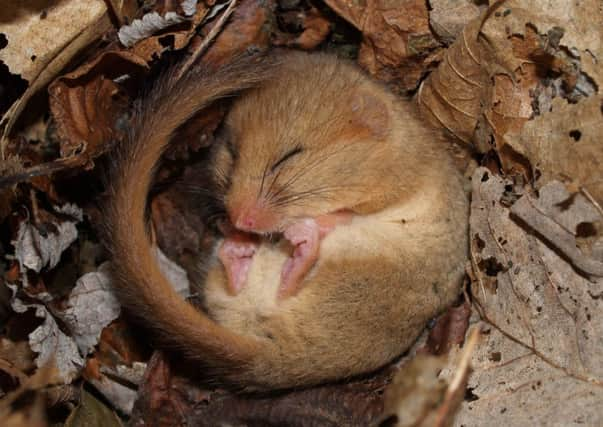Rare dormice given hand across ‘nature’s highways’


Once widespread, their numbers dropped so much that captive bred animals had to be recently reintroduced to counties including Yorkshire and Derbyshire.
Efforts are now being made to restore habitat along canals and rivers following a 600-mile survey of historic hedgerows.
Advertisement
Hide AdAdvertisement
Hide AdThe common, or hazel dormouse, famed as a character in Alice In Wonderland, is under threat from loss and fragmentation of its habitat, including old coppice woodland and hedgerows, which have declined by 50 per cent in Britain since the Second World War.
Following the survey efforts will be made to improve hedgerows, which will provide young dormice with shelter to hibernate this winter and create natural “highways” to allow them to travel to other areas of habitat.
The survey was conducted by 40 volunteers for the Canal & River Trust, which looks after 2,000 miles of waterways across England and Wales.
It revealed that half the hedgerows on trust land were in good condition, but also found areas where gaps can be filled and hedgerows can be extended to connect with other habitats.
Advertisement
Hide AdAdvertisement
Hide AdPhillippa Baron, Leeds-based ecologist for the Canal & River Trust, said: “We’re currently analysing the hedgerow survey data to work out exactly where needs improving and what sections have big gaps. It’s really important to have connectivity along our canal side hedgerows to improve the habitat environment for a range of species, including dormice.
“Dormouse populations in Yorkshire are quite unknown but we do know they’re quite rare. They’re a secretive and elusive mammal and currently we don’t have any accurate records of their exact numbers but we’re keen to help their populations improve as we do know from research carried out by the People’s Trust for Endangered Species that they declined by 50 per cent during the 20th century which is extremely sad to see for such a cute and iconic animal.”
Stuart Moodie, senior ecologist for the Canal & River Trust, said: “The greatest threat to dormice is the winter and our hedgerows provide them with essential shelter to hibernate.
“We’re so pleased that our survey has shown that over half of our hedgerows are in good condition, but it also means of course that the other half needs attention.
Advertisement
Hide AdAdvertisement
Hide Ad“Species-rich hedgerows are our oldest established habitat so it’s important we monitor and improve them and provide connectivity with other canalside habitats.
“Throughout the winter we’ll embark on a programme to reinvigorate sections of hedgerow, running hedge-laying and planting days, and make sure we’re doing what we can to provide improved and essential habitat.”
Ian White, dormouse officer for the People’s Trust for Endangered Species, said: “Dormice are a rare and declining species. It is also likely that their range is contracting due to poor management of their woodland home and because woods are becoming more isolated. Projects such as this...will help stop the decline of our native dormice and will also benefit many other animals.”
The survey was made possible with £50,000 funding from the People’s Postcode Lottery.